This guide covers one of the most time-saving and best quality drone power line inspection methods suitable for most use-cases.
Drone power line inspections are quickly becoming the industry standard. Using drones for inspections enables grid operators to have quicker, cheaper and more thorough data collection. But companies employing drone power line inspections have to keep in mind certain rules and norms to get the most out of their collected data. As the developers of the best-in-class power line inspection platform uBird, Hepta knows everything about data analysis. To help you collect the best images during your drone power line inspections, we have put together a simple guide to walk you through the basics.
Low Voltage (LV) & Medium Voltage (MV) towers, simple construction
For LV and MV inspections, small drones, weighing less than 1 kg, are very well suited. Their small size allows them to maneuver between a tower and vegetation, under the wires or even under tower support if need be. This means that optical zoom is not mandatory when you can get very close to take pictures. In addition, the small size and simple construction of drones significantly minimize the potential damage or loss to infrastructure or drone in case of an accident. Good weather for optimal flight operation is generally a bright and calm day. Excessive sunshine, sunrise, sunset, rain, snow, or high wind speeds may hinder the drone power line inspection quality and speed. One has to consider that, when taking photos, a drone has to be still. Pictures taken mid-flight are often blurry and don’t suit this style of inspection
When conducting inspections with drones, the following has to be considered:
For assessing the line’s overall condition, take a picture along the conductors, looking in the distance. This is helpful for assessing vegetation height and to see if any towers are crooked.
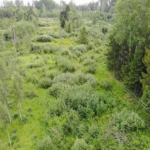
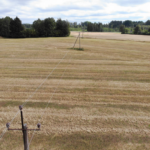
For assessing a tower’s overall condition, two pictures of opposite tower sides need to be taken. It is preferable that a tower is positioned at an angle so two sides are visible and not much spare space is left at the top and bottom of the picture. Two pictures per tower is also the bare minimum to find serious and obvious faults.
For detailed drone power line inspection, more pictures need to be taken and preferably from the top part of the tower, as most of the small details situate there. The image quality should be good enough to see separate wire strands.

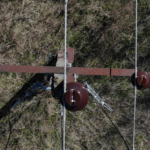
Top-down images are also very good for getting additional information on the severity of defects.
On regular towers, four to five pictures are the minimum required and are usually enough to achieve a good quality of inspection: two from the sides, two at a steep angle and one top-down.

Corners and junctions may need to be photographed more thoroughly as there are a large number of additional elements and some may be obscured by other elements.
Take multiple photos of the conductor so that the entire span of the conductor can be inspected. Usually, the photos taken during a single fly-by are enough.
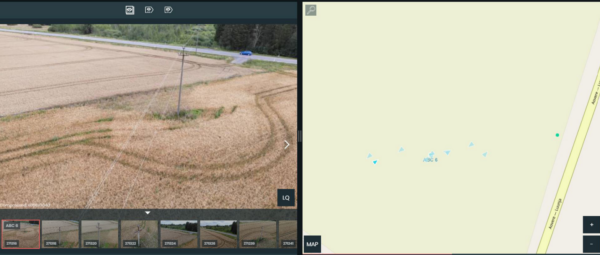
Overall: it is good to take multiple photos of a tower, especially from different angles. However, taking too many photos increases inspection time and yield very little additional information
Examples of low-quality photos
The photograph featured below is an example of the lowest quality image that can be inspected with utility inspection software, such as uBird. It may not seem like an unsuitable photograph, but it is the lowest acceptable quality. Vital details, such as those on the insulator and crossarm are not visible for manual visual inspection.
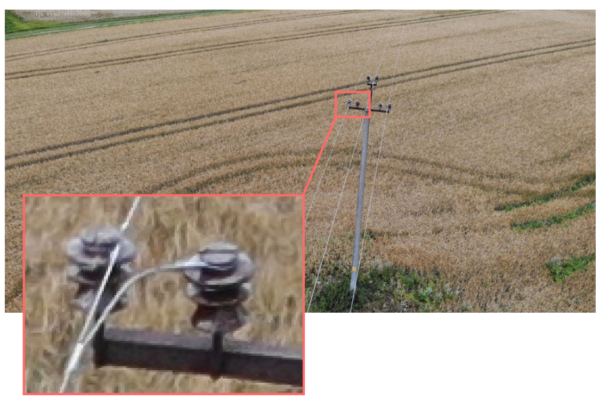
Photographing from a great distance yields low resolution upon zooming in. Only major defects can be detected. Chipping, flashovers, loose wire ties, faulty insulator attachment, broken wire strands are all examples of faults that cannot be detected on low-quality photographs. If such defects are missed, however, it could lead to catastrophic consequences.
This photograph is unacceptable for inspection. Even the major defects are very difficult to see.

Angle matters
Another subject of importance when talking about taking photographs is the angle. A shallow angle better brings out tower structure defects and provides a better overview of the vegetation, but wire bindings on an insulator are not very clearly visible. Taking photographs at a slightly steeper angle, so that the top of the insulator is visible, is perfect. Here you can see examples of both a shallow and steeper angle photograph of the same tower.
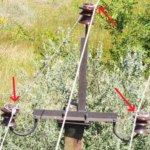
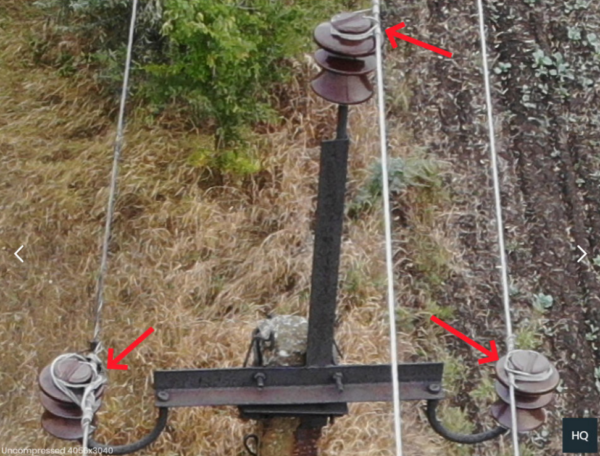
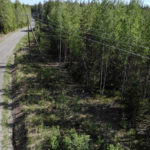
Here is another example of the fact that angle matters. This is a good angle to evaluate vegetation height, but not to assess the distance of branches to the wires.
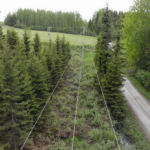
This angle provides a lot more information on the distance of branches to the wires but makes it complicated to assess the vegetation height. So depending on the situation, taking pictures at both angles may be necessary.
Camera settings
Another great tip when taking photographs in various weather conditions is to change the camera’s exposure value. Most of the time, you don’t need to change any values on the camera, but sometimes the weather is not so inspector friendly. Be it either a setting sun, low and bright winter sun or really dark and cloudy day: exposure value (combination of aperture size and shutter speed) can save the day when high-quality pictures are needed.
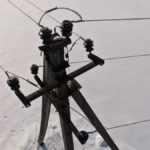
This is an example of an instance when camera settings have not been changed during flying: while the background is pretty, the tower itself is very dark and its details are not visible. By changing the exposure value you can “overexpose” the background so that the tower looks a lot brighter.
With this, a dark tower can be turned into a bright tower, and the details become visible. The background is very bright, but that’s not a problem as the main priority is ensuring good visibility of the tower’s details.
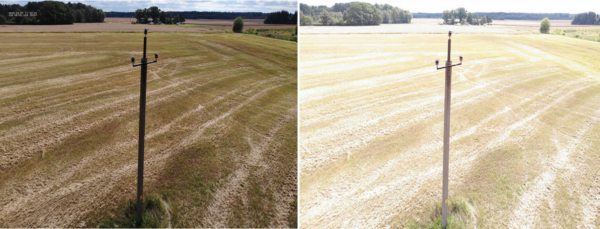
We hope that this drone power line inspection guide will help you capture better images and get better results in your analysis process.
If you want to try the uBird platform yourself, then you can sign up for a demo here
If you have any questions on how to capture quality data when conducting drone power line inspections, make sure to get in touch!

